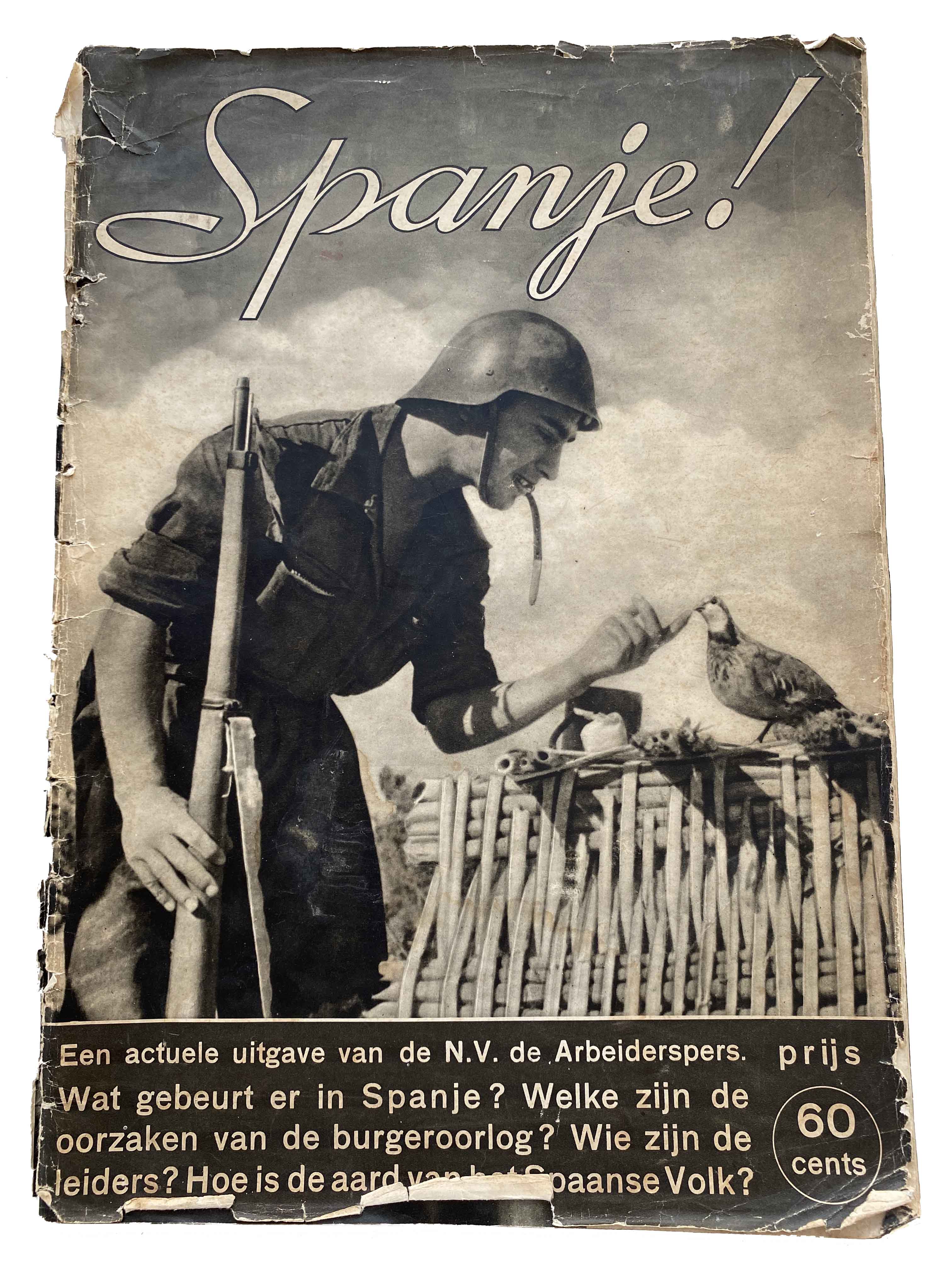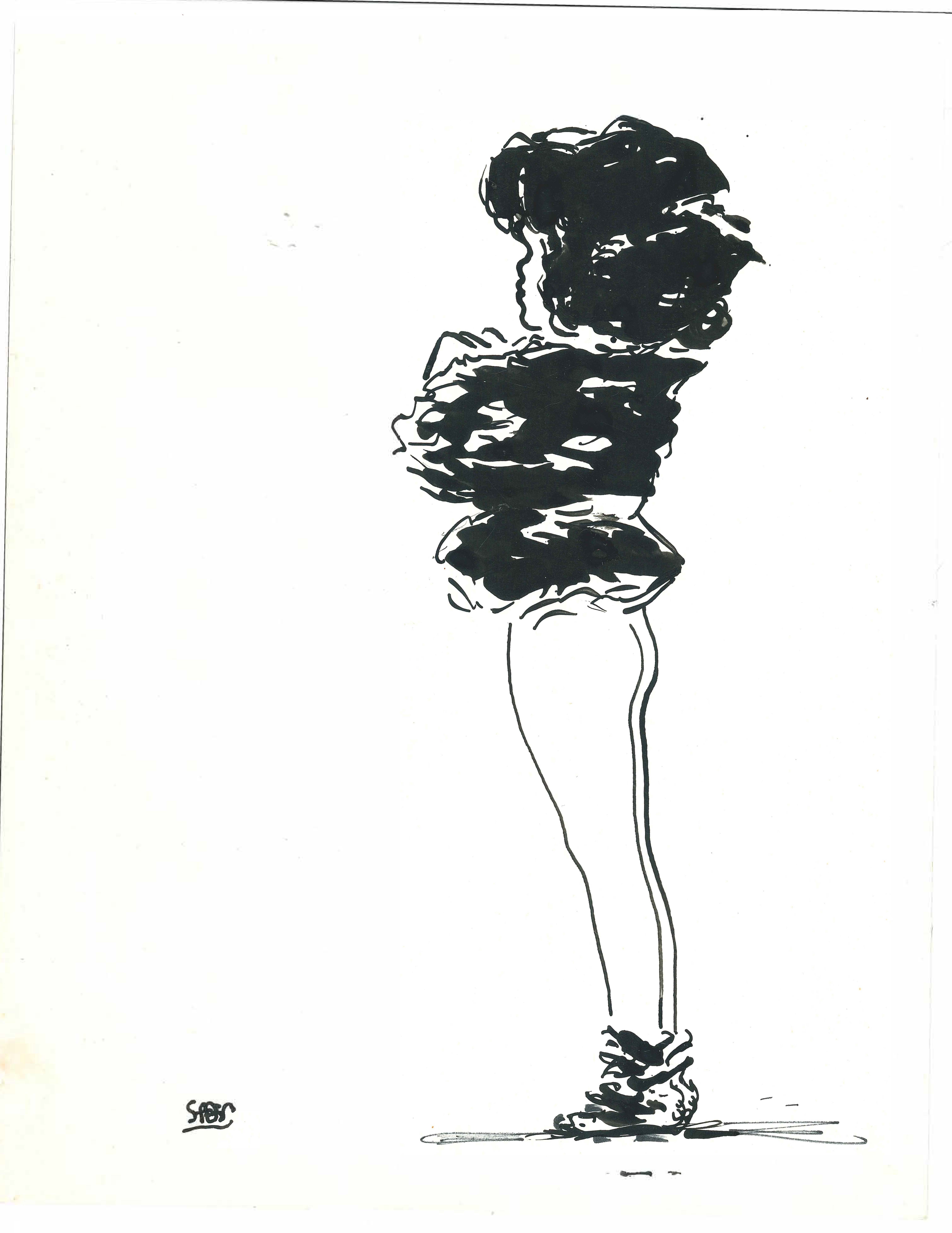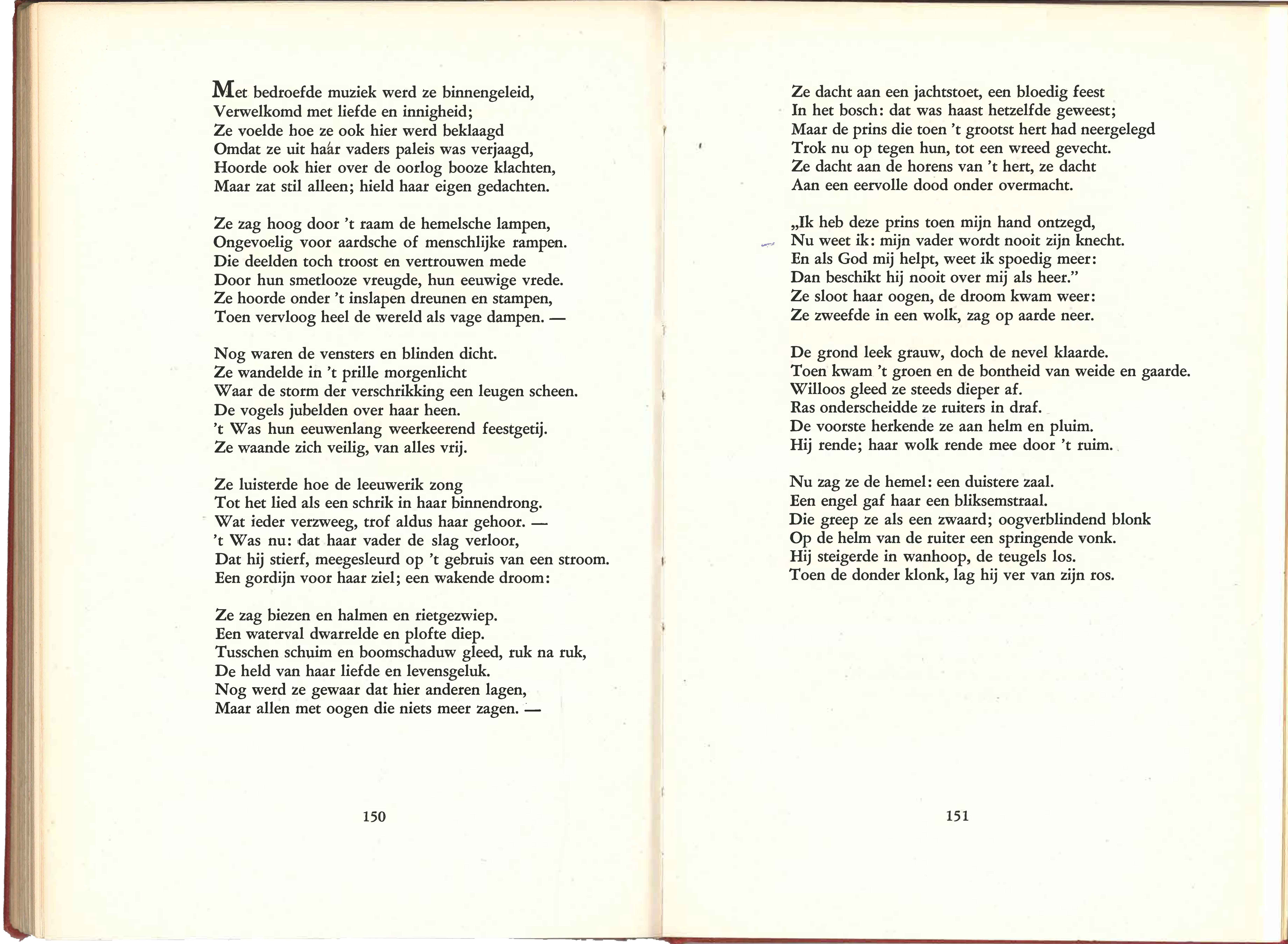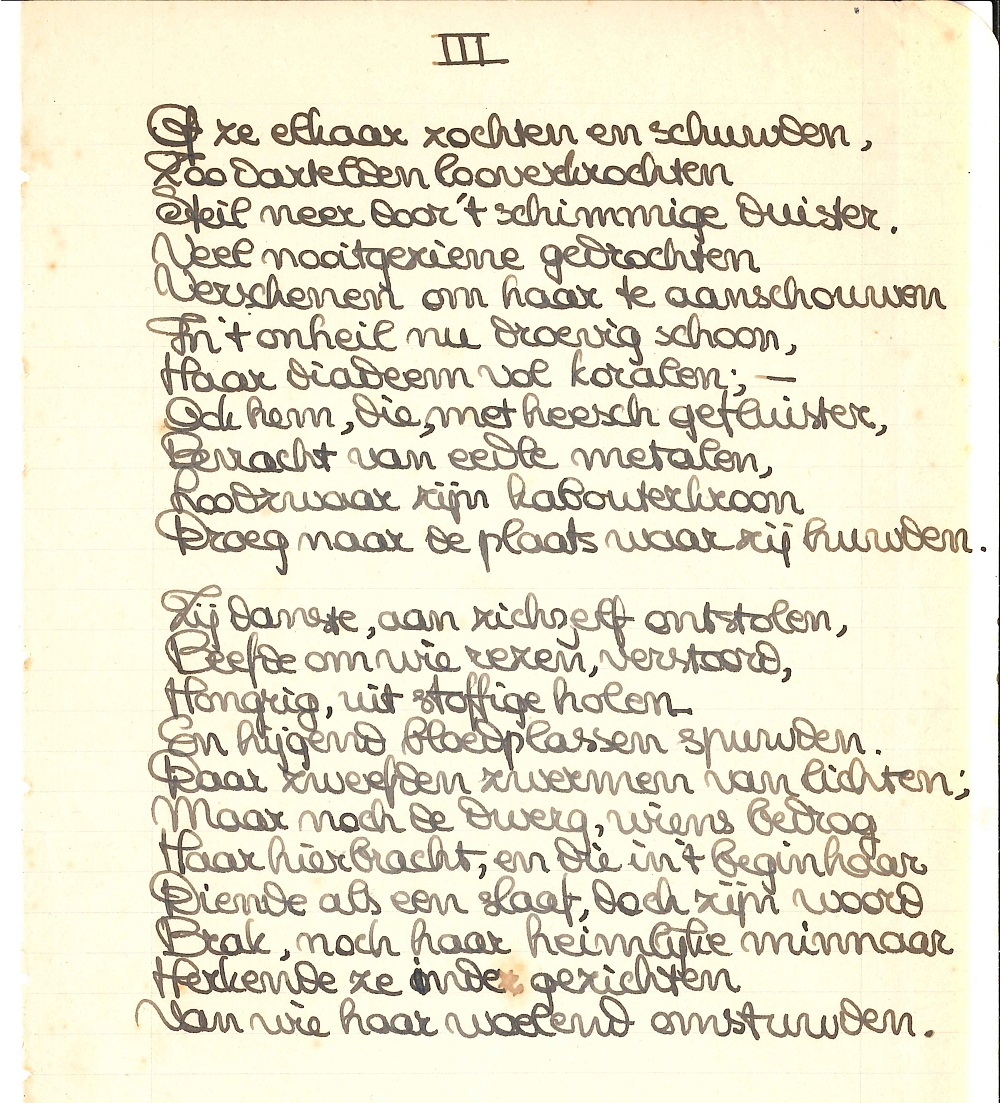‘En cambio de sus ‘Coplas’’. Two newly acquired collections of poetry by Hendrik de Vries

‘Por Enrico de Vries, en cambio de sus ‘Coplas’’, the poet Jan Slauerhoff wrote in June 1931 in a copy of his book Saturnus – ‘to Hendrik de Vries, in return for his ‘Copla’s’ [1]. The poet Hendrik de Vries (Groningen, 1896-1989) had translated in 1929 the so-called coplas into Dutch language. The copla is a short folk song or ‘couplet’ without end rhyme, which had a rich oral tradition in Spain. Recently, the University Library of Groningen acquired two special collections of poetry volumes and handwritten texts by Hendrik de Vries, including a first edition of his Spaansche volksliederen [Spanish folk songs] and of Coplas, the poetry edition that made him famous.

Never a foot outside of Groningen
De Vries was already making plans to travel to Spain when he had never set a foot outside of Groningen. He was a good friend of Slauerhoff, although they had entirely different characters. Slauerhoff expressed in his poetry his desire to stand out to sea, whereas De Vries tried to learn the Spanish language through self-study from 1923 onwards. His coplas were printed for the first time in the literary magazine De Vrije Bladen. Later on, they were published in 1931 as Spaansche volksliederen. Slauerhoff must have received this volume from De Vries shortly after its publication.

Slauerhoff sent manuscript drafts of his poems to De Vries as well, which were criticized punctually in the letters that his friend sent back to him. It was customary that poets thus reviewed each other’s work, before it was handed in for publication. De Vries wrote poetry full of dreams and unattainable desires, with little sense of reality, but with a measured form and end rhyme. One of his coplas reads for example:
‘Ik vermijd aller menschen gesprekken
Heb een droom tot onzichtbaar genot;
Ik ga naar verborgen plekken
En roep om de dood.’
[from: Spaansche volksliederen, 1931]
In his translation of the coplas De Vries allowed himself to do anything he wanted with the original text – he was not reluctant to alter even the meaning and form of the poems. The original coplas had no strict formal characteristics, something that was considered ‘too playful’ by De Vries and not in accordance with his own wish to point out an ‘essence’ in poetry. He did not appreciate these qualities in Slauerhoff’s poetry as well. But in his letters to Slauerhoff he was quite mild about the latter’s ‘casual’ poetry. That was probably because Slauerhoff was not only a friend, but also a doctor. De Vries could ask him for help when he suffered from psychological distress.
Poetry as ‘salvation’
De Vries suffered from extreme mood swings. In his letters to Slauerhoff, he more than once considered suicide as a reasonable option. Still, he was able to handle his manic periods by applying them as a source for his creativity. A long poem that he wanted to write together with Slauerhoff under the title of Erebus was considered by him as the ‘salvation’ that kept him from committing suicide during his first trip to Spain. De Vries was raised in a small home at the Anna Paulownastreet in Groningen. Afterwards he moved with his parents to the Korreweg. His father had to cope with long periods of depression, whereas his mother was diagnosed with a bipolar disorder. She was taken into a mental hospital several times when she attempted to take her own life. De Vries’s longing for everything Spanish could indeed be considered as a flight out of this anxious world.
Twelve journeys to Spain
Between 1924 and 1936, De Vries made twelve journeys to Spain. Each time he stayed no more than two weeks there. He travelled by train, bus and on foot, mostly through the eastern part of Spain. He felt attracted to the country in the first place because he found its flag the most beautiful one in the world. He thought the flag fitted beautifully well with the bullfights he visited. After Spain became a republic in 1931, the red-yellow-red flag was replaced by a red-yellow-purple one. De Vries was a republican, but he continued to cherish the original flag.
During his trips to Spain, De Vries did not express any political views. Only after the beginning of the Civil War in 1936, he took side with the republic, and against the rising national-socialist factions of General Francisco Franco. From now on, De Vries did not travel to Spain anymore, although he continued to organize lectures and collections for the benefit of war victims.
Acquaintance with Geers
At the end of the 1920s, De Vries got acquainted with the Hispanist G.J. Geers, who had developed a sympathy for communism during his visits to Spain. After he was banned for ideological reasons from the country, he began to work as an unpaid lecturer at the University of Groningen. Geers wrote the preface to the volume Spaansche volkskliederen. De Vries was proud of his translations and preferred to recite them during his lectures. But his knowledge of the Spanish language remained limited. To practice his written skills, he sometimes corresponded in the Spanish language with Slauerhoff, but these letters do not feature a rich grammar or vocabulary
De Vries liked to translate poetry by the authors of the Generation of 1898, like Miguel de Unamuno. But when he found an annoying repetition in Unamuno’s work, he felt ‘obliged to poetry itself’ to correct this ‘mistake’. Also the mystical element that Unamuno ascribed to the Castilian landscape could not be found in De Vries’s translations. He preferred to read poetry from the context of Spanish neoromanticism and modernismo, a movement that started at the same time as the Generation of 1898. Still, De Vries never visited a contemporary sympathizer of these movements during his travels to Spain.
In a contribution to the literary magazine De Nieuwe Stem, De Vries did write about the work of his contemporary Federico García Lorca. He examined how this poet was influenced by the baroque bard Luis de Góngora. This influence was felt by De Vries as well, he confessed. Particularly, Lorca’s description of the bullfight as a religious spectacle was very appealing to him: ‘Who does not love the bull, cannot be a torero’, he argued. De Vries always wanted to enter the arena as a capitalista someday, as a spectator, dressed in white, to fight the black bull. In the archive of De Vries in the University Library of Groningen, a lot of Spanish magazines and newspapers can be found that feature reports of recent bullfights. He saw in them a combination of passion and intelligence, anxiety and bravery, grace and power. His translations of Spanish poetry can therefore be seen as a feverish attempt to bridge the distance with his parental home in Groningen.

Collection Hans Roest
The copy of Spaansche volksliederen that has now entered the collection of the University Library contains a dedication by Hendrik de Vries ‘aan Mevr. Roest [to Mrs. Roest]. 24 November 1931’. The volume was previously in the possession of Hans Roest (1917-2006), a journalist working from 1946 onwards at De Maasbode newspaper. Roest corresponded with a large number of poets and novelists. He often send them a request for an autograph fragment of their prose or poetry.
The collection that was recently acquired by the University Library also contains three manuscript letters from Hendrik de Vries to Roest, in which the poet accepts his request for an autograph poem. In a letter to Roest, dated November 1943, De Vries writes about his admiration for the late romantic verse of Hélène Swarth. Roest had some autograph poems written by Swarth in his collection, which he had kindly offered to borrow to De Vries. This shows that De Vries attached a special significance to the handwriting of the authors he admired, and he had a remarkable hand himself too. De Vries argued in his letter to Roest that good poetry should be melodic too. That is what he liked in the coplas as well: according to him, this poetry still formed an organic unity with music and dance.
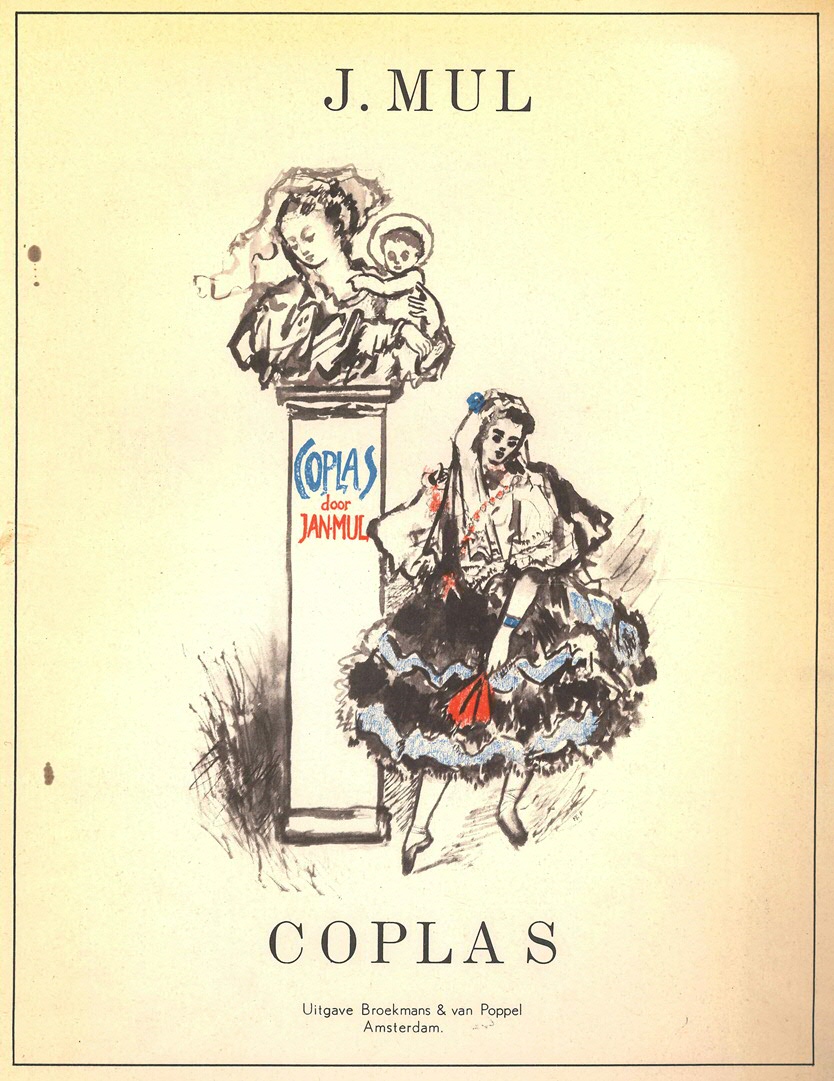
In his letter to Roest, De Vries analyses the following ‘Song’ by Swarth:
Mijn hart is een beker vol purperen wijn.
- Wien zal 'k er mee drenken?
Mijn hart is een vogel, die zingt zoo fijn.
- Wien zal ik hem schenken?
Mijn hart is een kindje, dat kreunt van pijn.
- Wie zal het niet krenken?
Mijn hart zal eens dood en begraven zijn.
- Wie zal het gedenken?
[from: Hélène Swarth, Poëzie, 1920]

According to De Vries, the poem pleased him very much, except for one line. The ‘wie’ [who] from the sixth line ‘Wie zal het niet krenken?’ [‘Who shall not harm it?’] had a totally different meaning than the ‘wien’ or ‘wie’ [‘whom’ or ‘who’] in the other lines. De Vries wrote to Roest that this has disturbed him so much that he had to reject the whole poem. The letter suggests that Swarth’s poem would have been better if it had followed De Vries’s own poetical guidelines. This can be deduced from the following poem, which was copied by De Vries on a sheet that originates from the same collection of manuscripts:

Magical forms
De Vries was a great admirer of the philosopher Friedrich Nietzsche and his theory of the ‘will to power’, which considered life as a heroic struggle for power. Also Ernst Schertel, an author of popular scientific publications about Gnosticism, magic and sexology, had his attention. In the copy of Schertels Magie: Geschichte, Theorie, Praxis (1923), that originates from the library of De Vries, he underlined the following citation: ‘Aller Kampf um Herrschaft ist also ein Kampf feindlicher Strukturen, ein Kampf der Formen. Form ist nichts Totes, Äuserliches, Wesenloses, sonder Träger von Kraft, ein mystisches Etwas, das sich auswirkt im Sinne der Bildgesetze.’ (p.3).

In other words, Schertel pointed out that in contemporary culture people were fighting a battle, not only between dominating forces, but also between forms. By taking control over form, and to De Vries that could be simply the form of his verse, a force was gained that had a mystic notion to it. The perfect poem had a significance that the author could not dare to think possible. This notion could also be found in the strange, mysterious paintings that De Vries began to make after the 1930s.

But De Vries’s desire for the perfect command over form was not limited to the arts only. Also the body had to be controlled. He particularly considered the female body as the source of a ‘false’ seduction. That is why he probably underlined in Schertel that the body was nothing else than a ‘complex of apperception’, a ‘thing’: ‘Unser “Körper”, unsere “Seele” undsoweiter sind grundsätzlich nichts anderes als bestimmte Wahrnehmungskomplexe wie ein Baum, ein Haus, ein Stern oder sonst ein “Ding”’. (p.55). He preferred to fantasize about the pure, unspoilt nature of the body of young girls, which he called niñitas. These sensual girls became the subject of hundreds of erotic drawings that De Vries made during his travels through Spain.
De Vries was not able to discuss these fantasies with anyone. Only his correspondence with Slauerhoff suggests that the poet was weighed down by his erratic sexual preferences. A concrete engagement with a woman came eventually during the Second World War, when Riek van der Zee, an admirer of his work, sought contact with him. They would marry in 1947.

Collection Willem Wilmink
The other collection of poetry by Hendrik de Vries that we recently acquired originates from the poet and songwriter Willem Wilmink (1936-2003). As a boy, Wilmink convinced his father that he should buy him the ‘quite expensive’ book Coplas. He was deeply impressed by the powerful language that was used by De Vries to write about an impression or a sentiment.
Soon, Wilmink learned more than forty of these poems by heart. He was fascinated by the incomprehensible, but never disturbing element in De Vries’s poetry. The presence of this ‘riddle language’ made his work less interesting to his colleagues from the department of Dutch studies at the University of Amsterdam, where Wilmink came to work in 1961. At the time, a close reading of poetry belonged to the core curriculum. By using this method, literary scholars wanted to disclose the significance of a poem through a meticulous analysis of its technical features.

Wilmink argued that the poetry of De Vries could not be interpreted by using this method, since he had written many poems from the perspective of a child, who was not yet aware of its own thoughts. An example is the poem ‘Vroeg, toen ‘t in de verte al dag was’ [‘Early, when there was daylight already from afar’]
‘roeg, toen ’t in de verte al dag was,
Kwamen paard en wagen voor.
Nog brandde een lamp in de stalgang.
’t Werd groot feest. Hij met zijn oom.
Zo’n lief paard. Zo’n beste wagen.
Ze zaten! Wat zou ’t nu worden?
Eerst een donker, dauwig zandpad,
Mul, moeilijk. Toen lang gedool.
Veel bloemen, en felgroen grasland.
Geruis ook van fris gestroom.
Wegjes tussen dichte hagen.
Ook hooi. Stekels, die al dorden. […]’
[from: Gitaarfantasieën, 1955]
Het verraderlijke kind
Wilminks own verse often had an autobiographical slant. In Het verraderlijke kind [The treacherous child], the PhD thesis that Wilmink defended in 1988, he argued that through his poetry, De Vries was able to identify himself with the child he once was. In his poetry, Wilmink recognized the fears and fantasies of his own earliest childhood. But in his classes of literary analysis, Wilmink spent attention as well to verse construction, rhythm, timbre, rhyme, intertextuality, associations and the effect of words, sentences and sounds on each other. The poetry volumes by De Vries that Wilmink kept in his collection contain many critical notes in the margins, which can shed light to the research that was done in preparation of his dissertation.
But Wilmink did not shy away from a biographical interpretation of literary works either. De Vries, born in 1896 as the middle son of the linguist and teacher Wobbe de Vries and Frouwktje Opten, was the only one in the family with an interest in poetry. His father was the son of a farmer from Noordhorn, who fled his parental home and had passed his doctoral defense with distinction. Although his mother never showed any appreciation of her son’s poetical ambitions, his father regarded it as a ‘silent triumph’. The death of his father in 1942 inspired De Vries to write a large number of poems that can indeed be interpreted biographically – although they are dreamlike at the same time.

In the poetry volume Toovertuin [Magic garden, 1942], the first-person narrator is visited regularly by his deceased father. Of course, the ‘I’ from these lines is not necessarily the autobiographical ‘I’. After all, the poet could not always decide which aspects from his work should be interpreted autobiographically or not. De Vries had eagerly read Freud; he thought that his psychological insight was so powerful, that he must have suffered from his own findings. De Vries’s own poems bear witness of this double relation between the poet and his creative power as well. As a poet, De Vries was able to animate soulless things. This ability was attractive to him, but it also caused anxiety. In Toovertuin, an untitled poem reads for example:
In the collection of poems Keur uit vroegere verzen (1916-1946) [Choice of earlier poems] of 1962, the first line of this poem was changed into ‘Onder bedroefde muziek werd ze binnengeleid’. Now the music had a little less animated character.
Choice of earlier poems
In our copy of Keur van vroegere verzen, a large number of loose manuscript sheets were inserted in the hand of Hendrik de Vries [2]. On these sheets, the poet instructs his publisher G.A. van Oorschot about the compilation of the edition. He states for example that the poems from the section called ‘Romancen’ were all stemming from Toovertuin, but that these poems were not numbered to keep the unity of the texts. Which numbering they would get in the edition of collected verse, was still unclear: De Vries erased many numbers in the left margin. It is interesting to reconstruct how this edition came to be.
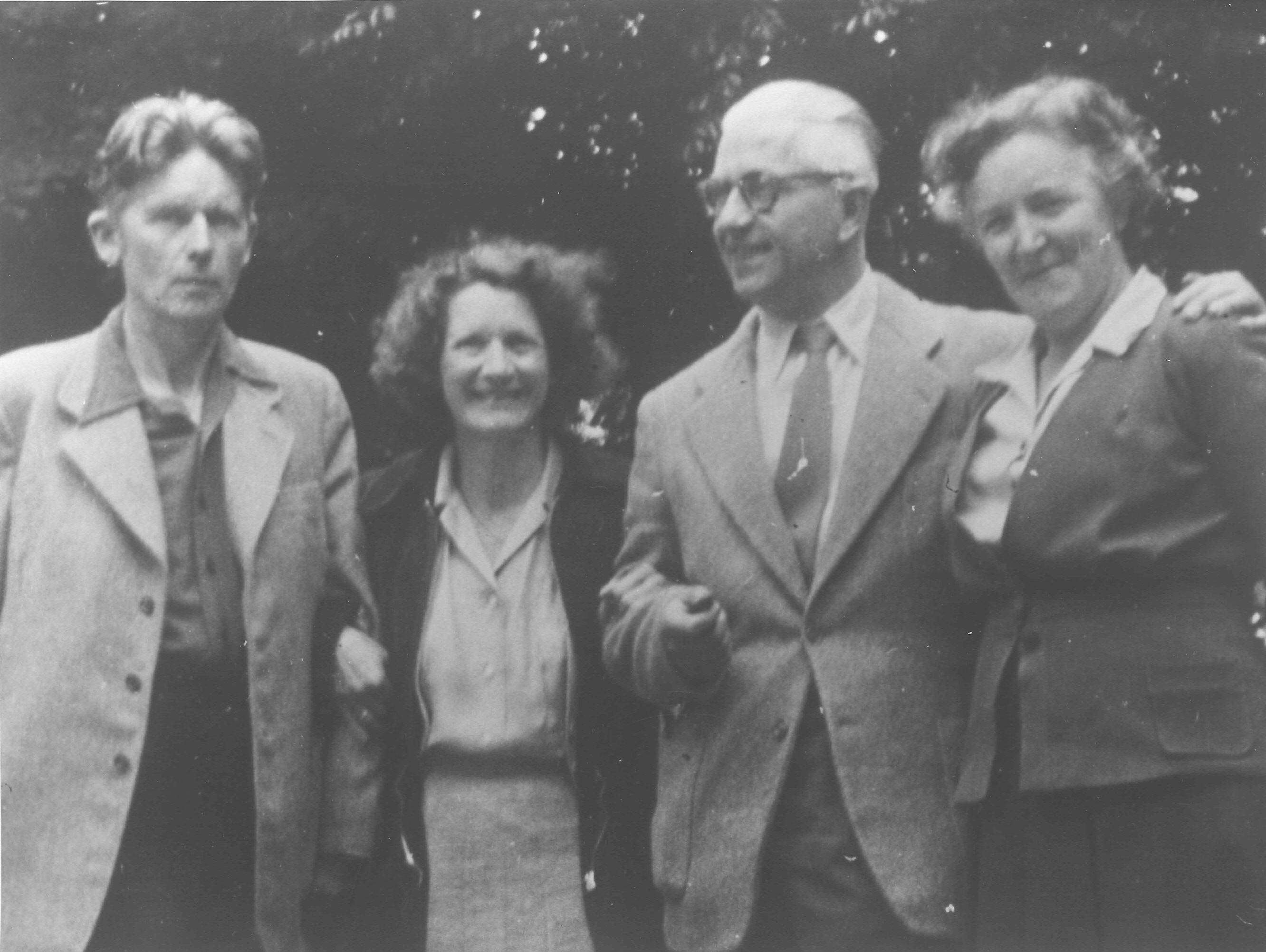
De Vries made in Keur van vroegere verzen a subdivision of different sections of his poetry. This subdivision does not always match with the order of publication of the volumes that he had published before. De Vries wrote annotations in the margins to inform the compositor of the book about the type of his poems: sometimes they could be simply drawn up as they were printed before, sometimes they had to be adjusted. Whereas De Vries was very precise in the spelling and punctuation of his publications, Slauerhoff almost completely neglected this aspect. The presence of these critical remarks argues for the fact that both newly acquired collections can be of importance to a new edition of the collected poetical works of De Vries, in which all variants and rough versions can be taken into account.
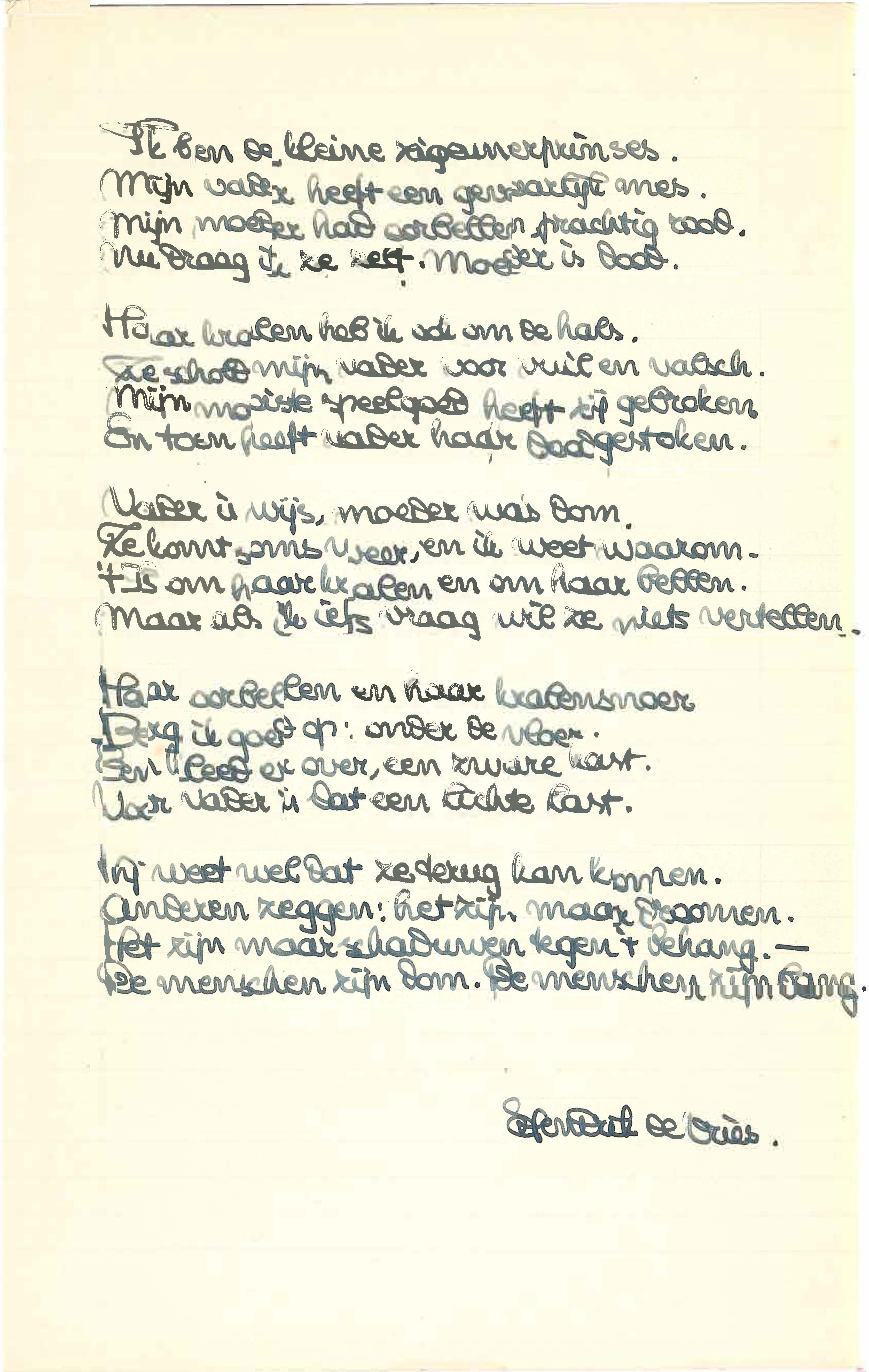
Literature
- Hermans, Hub, ‘De Hispanolitis van Enrique de Vries’, in: Over de poëzie van Hendrik de Vries: twee lezingen gehouden op het Hendrik de Vries-symposium 8 november 1986. Groningen: eigen beheer, 1987.
- Schertel, Ernst, Magie: Geschichte, Theorie, Praxis. Prien: Anthropos-Verlag, 1923.
- Vegt, Jan van der, Hendrik de Vries: biografie. Amsterdam: Meulenhoff, 2006.
- Vegt, Jan van der (red.), Brieven 1923-1932. Hendrik de Vries & J. Slauerhoff. Hilversum: Verloren, 2015.
- Vries, Hendrik de, ‘Het poëtisch credo van Lorca’, in: De Nieuwe Stem 16(1961)8, p. 500-510.
- Wilmink, Willem, Mijn broer. Aantekeningen bij gedichten van Hendrik de Vries. Baarn: De Prom, [1983].
- Wilmink, Willem, Het verraderlijke kind: over enkele gedichten van Hendrik de Vries. Amsterdam: Bert Bakker, 1988.
Notes
- In the very first words of his dedication, Slauerhoff made two errors ('por' should be 'para' and 'Enrico' 'Enrique').
- This book stems from the same collection as the letters from De Vries to Hans Roest, but it is not clear whether this copy has also been in his collection.
| Last modified: | 12 October 2021 3.28 p.m. |







